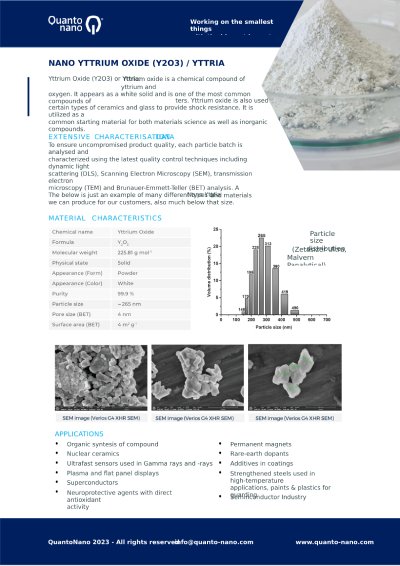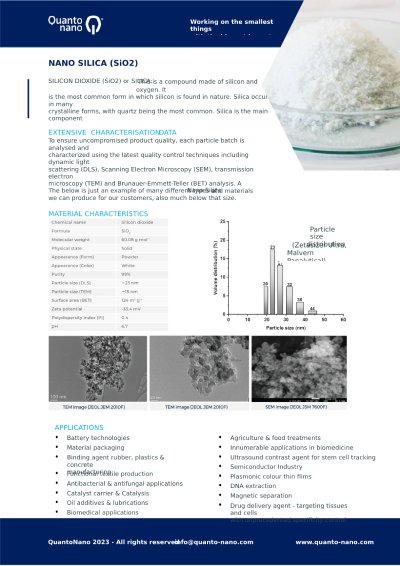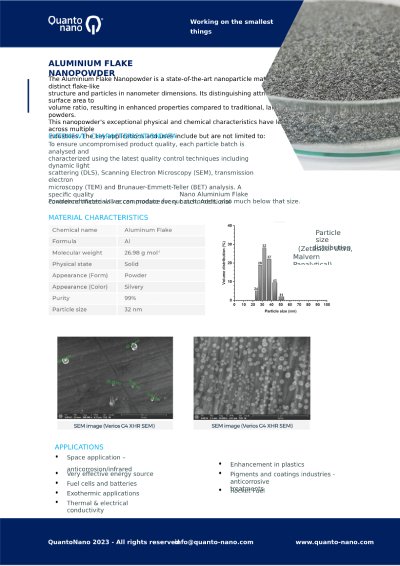Nano Materials
Quantum Dots
Nano active materials significantly enhance battery performance, energy density, and safety. Nano-sizing these materials improves their electrochemical properties, increasing energy density, rate capability, and cycle life.
Quanto Nano
Product Categories
Quanto Nano
Quantum Dots
Widely used in photovoltaic cells for solar energy conversion. CdTe quantum dots are known for their high absorption efficiency in the solar spectrum.
Send Inquiry
Send Inquiry
Employed in infrared detectors and solar cells. PbS quantum dots are notable for their strong absorption in the near-infrared region, making them suitable for telecommunications and imaging applications.
Send Inquiry
Send Inquiry
A less toxic alternative to other quantum dots, used in LED displays and as fluorescent labels in biomedical imaging. InP quantum dots provide a safer option for consumer electronics and medical applications.
Send Inquiry
Send Inquiry
Utilized in optoelectronic devices and UV-light emitters. ZnSe quantum dots are known for their wide bandgap and high luminescence efficiency.
Send Inquiry
Send Inquiry
Used in thin-film solar cells. CIGS quantum dots offer a tunable bandgap, which is advantageous for absorbing different wavelengths of solar light.
Send Inquiry
Send Inquiry
Popular for its tunable bandgap, used in light-emitting diodes (LEDs) and photodetectors. CdSe quantum dots are notable for their size-dependent optical properties.
Send Inquiry
Send Inquiry
Gaining popularity due to its non-toxic nature and abundance, used in electronic and photovoltaic applications. Si quantum dots offer environmental benefits over other types.
Send Inquiry
Send Inquiry
Known for their unique electronic properties, used in sensors and energy conversion devices. GQDs are also explored for their potential in quantum computing.
Send Inquiry
Send Inquiry
Emerging material in solar cells and light-emitting applications due to their high efficiency and tunable optical properties.
Send Inquiry
Send Inquiry
Employed in biological imaging and sensors. Gold quantum dots are used for their biocompatibility and unique optical properties.
Send Inquiry
Send Inquiry
Used in light-emitting applications and as a buffer layer in solar cells. CdZnS quantum dots have tunable optical properties suitable for a range of photonic devices.
Send Inquiry
Send Inquiry
Summary
Quantum dots, with their unique optical and electronic properties, are pivotal in the fields of optoelectronics, photovoltaics, and biomedicine. Their ability to absorb and emit light at specific wavelengths, which can be tuned by altering their size, makes them invaluable in applications such as solar cells, LEDs, and biological imaging. The development of these nanoscale materials is driving advancements in technology and offering innovative solutions in energy, electronics, and healthcare.

WE WORK ON THE SMALLEST THINGS WITH THE BIGGEST IMPACT










